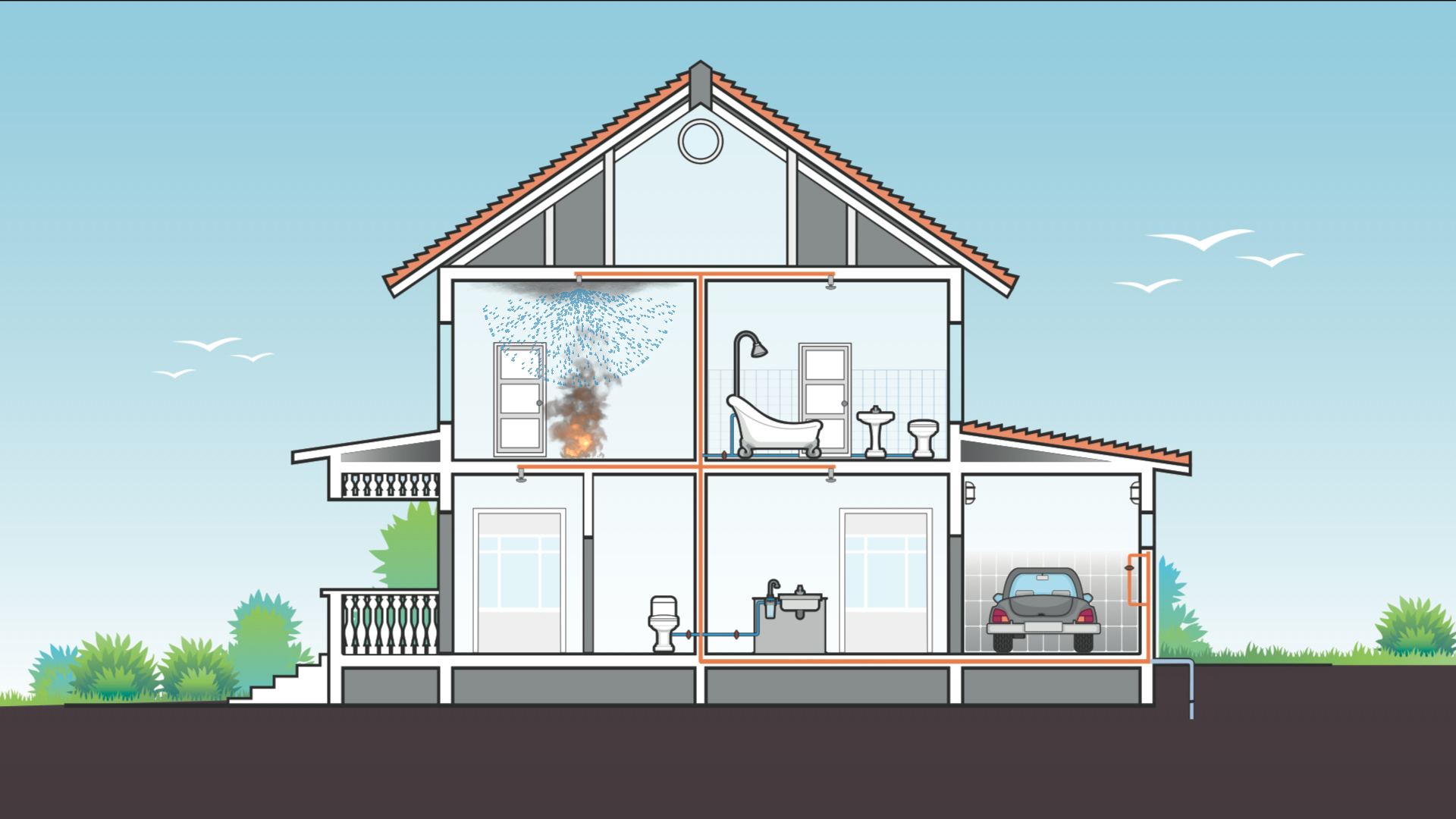Recent announcements from both the Canadian and U.S. governments have placed high importance on the need to increase the stock of affordable housing. In Canada, the Trudeau government has announced a further 4,500 units and $1.5 billion in funding. In the United States, the Biden Administration is proposing 100,000 additional affordable housing units over the next three years. Residential fire sprinklers should be considered essential components of both these projects.
Installed residential fire sprinklers are proven to provide life safety – of residents and responders – as well as property protection. Nevertheless, sprinklers are often eliminated from social housing projects because of the initial capital costs and because they are not required by the minimum standards in the building codes. Eliminating this highly effective technology deprives affordable housing tenants from the life-saving benefits of home-fire sprinklers.
In Canada, social housing tends to rely on provincial funding, often with federal support. To get the best bang for these limited dollars, project proponents typically fund only capital costs associated with meeting the absolute minimum requirements of the applicable building codes. Offering valuable sprinkler incentives at the local level can offset the installation costs, removing that obstacle. Local approval authorities should consider negotiating with incentives ahead of housing construction approvals.
The HFSC Canada website includes detailed information on the use of incentives to encourage single-family homebuilders to protect new construction developments with fire sprinklers. These also include case studies and other resources to support local authorities as they offer these incentives. A soon-to-be-released white paper by the Canadian Association of Fire Chiefs (CAFC) outlines its position supporting the incentivization of sprinklers and expands on the many opportunities available at the local level to offset the installation costs.
Benefits of Installed Fire Sprinklers
Beyond the enhanced protection of the unit and the residents, installed sprinklers uniquely protect first responders from fire and exposure hazards. Fire sprinklers improve the value of buildings and result in insurance savings, both for building owners and unit renters. FM Global found that installed home fire sprinklers cut greenhouse gas emissions and reduce water use. In short, installed residential fire sprinklers benefit the entire community.
In the event of the fire, sprinklers reduce the fire damage and can often result in the units affected being re-occupied in as little as a day. Without sprinkler protection the damages can be significantly higher, and the unit can be a total loss. In my experience serving in a large urban fire service, I have seen too many small fires lead to the loss of multiple units for extended periods of time, all for the want of a single fire sprinkler. Furthermore, repairs and replacement costs for damaged units must come from limited operating funds, which impacts adequate maintenance in the entire structure. When units are a total loss they are often never rebuilt, further depriving the community of essential affordable housing units. Sprinklers would save these units and reduce strains on operating budgets.
Affordable housing is specifically intended to address the needs of the disadvantaged. Poverty is a significant risk factor leading to increased fire fatalities in North America. NFPA’s report Poverty & the Risk of Fire, 2021 states, “The connection between poverty and elevated fire risk has been documented in multiple studies, some going back as far as the late 1970s and early 1980s.” Disability is a second significant risk factor. People with disabilities may rely on affordable housing if they have limited incomes. Many disabled individuals have reduced abilities for self-evacuation in the event of a fire. NFPA’s report Physical Disability as a Factor in Home Fire Deaths, 2014 states, “NFPA estimates that physical disability was identified as a contributing factor in an estimated average of 400, or 15%, of U.S. home fire deaths per year during 2007-2011.” Sprinklers provide the necessary life-saving benefits of increasing safe evacuation times.
Residential fire sprinklers in affordable housing units add essential life-safety protection for our most vulnerable citizens. They should be considered even when not required by local building codes. Initial upfront costs can be reduced through incentives at the local level. Annual operating costs can be better assured. In the longer run, sprinklered rental properties can provide lower cost accommodations to their occupants and be available sooner after a fire. Residential fire sprinklers provide all these benefits, and greatly reduce the potential for loss of life to residents. Sounds to me like an essential component for any future affordable housing project.

